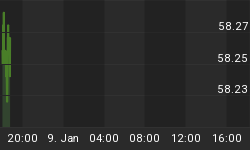Another episode of sovereign defaults seems to be well under way, which prompts the question about just how bad can it get? The above quotation is from a 1933 study of that example of government defaults and as the writer notes, it was preceded by a "new borrowing orgy". The word "new" is important because the literature often includes the description "new financial era". The first one, the South Sea Bubble, culminated in June 1720 and it has essentially been the model for five subsequent ones, including the example that completed in 2007.
Although the stock market attracts the most attention during a great financial mania, the action has included the equivalent mania of investors reaching for yield and brokers reaching for commissions. There is a typical path that defines a post-bubble contraction that includes widespread remorse and chagrin. In the credit markets this has included the collapse in sub-prime mortgages, the hit to corporate bonds and more recently the contraction is threatening the sovereign debt market. The focus has been on the PIIGS, but if the past is any guide this is the initial phase of another historical problem in sovereign debt.
During the New Era that culminated so extravagantly in 1825, London was the financial centre and the City floated issues by Russia, Prussia, Spain, and a number of Latin American countries as well as cities.
For example, Peruvian 6 percents were done at 88 in 1822 for a yield to maturity of 6.95%; then again at 82 for a 7.50% yield in 1824, and at 78 (7.85%) in 1825. Then the market became illiquid and eventually collapsed with the usual post-bubble deflation. Some 70 U.K. banks stopped payment and Rothschild assisted in preventing the Bank of England's default.
With the usual swings in the business cycle, the contraction continued until the mid 1840s.
The next long expansion ended with a mania of asset speculation in 1873. At the height of that mania and as credit markets were becoming stressed an important New York newspaper editorialized that nothing could go wrong. The main point was that the US did not have a central bank that would be constrained by the gold standard in accommodating the needs of Wall Street.
Instead there was confidence that the Treasury System and its admired secretary could issue massive amounts of credit by buying bonds out of the market.
While recklessness was rampant, there were rational comments. The Economist's April 27, 1872 edition advised:
"Avoid states which are constantly borrowing, which must therefore be paying off the interest on their old debt with the fresh loans."
The progress of a disaster in sovereign debt in 1873 was nicely chronicled by headlines in The Economist:
| June 7: | "The Approaching Spanish Repudiation" |
| July 5: | "[Spain] Making Arrangements for the Payment of Current Coupon" |
| August 2: | "Spanish Interest Will Not Be Paid" |
| August 30: | "Anarchy in Spain" |
The Argentine crisis of 2001 was documented by headlines from a number of publications. It is worth noting that as late as June there was confidence "Appetite for Credit Risk has Improved Considerably".
| July 18, 2001: | "Markets Laud Argentine Debt Accord - Calms Fears of Default" |
| August 3, 2001: | "Flurry of International Contacts to Prevent [Argentina] Default" |
| December 14-20, 2001: | "Angry Argentines Take Their Displeasure to the Streets" |
| "State of Siege" | |
| "Looters Ravage Cities" |
There seems to be a common pattern on the transit from confidence to dismay, and it will be interesting to see how it works out this time around. The distinction is that the 1873 example included many countries and as the historian, S.G. Checkland, wrote "Many half-barbarous states pressed eagerly for funds, and spent them with no display of wisdom."
The Argentine problem in 2001 was not accompanied by insolvencies in a number of countries.
However, there is no question that the 1930s disaster in all lower-grade debt was part of a massive post-bubble contraction. It was reviewed in Foreign Bonds: An Autopsy, a rather appropriate title, published by Howland Swain Company in 1933:
"The fiscal history of Latin America ... is replete with instances of governmental default. Borrowing and default follow each other with almost perfect regularity. When payment is resumed, the past is easily forgotten and a new borrowing orgy ensues. This process started at the beginning of this past century and has continued down to this present day. It has taught nothing."
How bad can it get? Typically the post-bubble contraction afflicts all aspects of the financial markets - including sovereign debt. The process is devastating and continues until both lenders and borrowers vow to never be reckless again.
Ampersand
Sovereign Follies 2010:
| January 14: | "Greece Unveils Stability Program" |
| January 21: | "Investors are concerned that Greece won't be able to finance its budget deficit." |
| February 14: | "Years of unrestrained spending, cheap lending and failure to implement reform." |
| February 17: | "Greek Tragedy Averted, For Now" |
| February 24: | "Greek Police, Protesters Clash" |
| April 11: | "Emergency Aid Approved" |
| August 10: | "Greek Debt Crisis Finally Over" |
| August 10: | "Greece is one part of the crisis and it has faded from the headlines." |
2011:
| May 29: | "Thousands of protestors denounce Greece's entire ruling class." |
| June 28: | "Greek Debt Crisis Leads to Mass Strike" |
| June 28: | "Greece Faces 'Suicide' Vote on Austerity" |
"Bankruptcies of governments have, on the whole, done less harm to mankind than their ability to raise loans."
- Prof. R.H. Tawney, Religion And The Rise Of Capitalism, 1926
Two-Year Greek Government Notes
| August 10, 2010: | "Greek Debt Crisis Finally Over": Yield 9%. |
| June 28, 2011: | "Greece Faces 'Suicide' Vote on Austerity": Yield 30%. |















